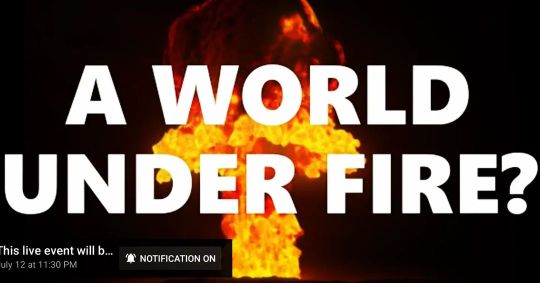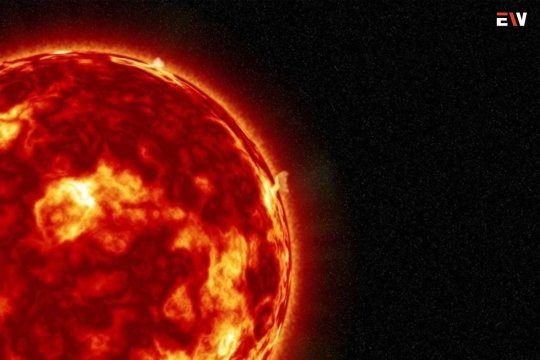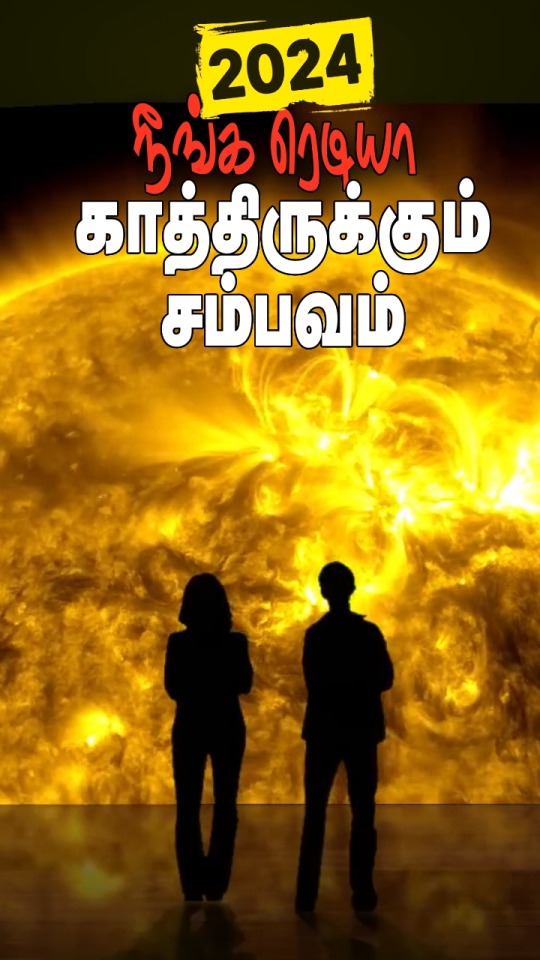#spaceweather
Link
The Space Climate Research Group at the University of Oulu, Finland has been studying the effects of energetic particle precipitation from space, more commonly known as the aurora borealis or Northern Lights, on winter weather variations for quite some time. The aurora borealis is not only a beautiful light phenomenon, but also involves chemical changes that lead to ozone depletion high in the polar stratosphere in winter.
The Space Climate Research Group at the University of Oulu, Finland has been studying the effects of energetic particle precipitation from space, more commonly known as the aurora borealis or Northern Lights, on winter weather variations for quite some time. The aurora borealis is not only a beautiful light phenomenon, but also involves chemical changes that lead to ozone depletion high in the polar stratosphere in winter.
Ozone depletion caused by energetic particles intensifies the polar vortex, a strong wind that blows from west to east around the polar region during the winter season. Intensified polar vortex also enhances westerly winds at the surface, producing mild winters in northern Europe and Finland in particular.
"On the other hand, during winters with weak particle precipitation, the polar vortex can weaken and even break down completely, allowing cold Arctic air to flow south. This is when Finland and Northern Europe typically experience cold spells, like this winter," says Associate Professor Timo Asikainen.
"The polar vortex has already broken once this winter and is forecasted to break again this coming weekend. Our own models predicted the likely break-up of the polar vortex during the winter already last summer."
Experience shows that, especially in Finland, the consumption of electricity and, more generally, of energy used for heating, is very much dependent on weather. This raises the question: How much can the particle precipitation from space affect electricity consumption via the polar vortex? A recent study by the University of Oulu's Space Climate Group was the first to address this very question. ...
5 notes
·
View notes
Text

#planet#planets#PlanetFormation#PlanetWater#EXOPLANET#exoplanetexploration#astronauts#AstronautStatus#SpaceX#spaceexploration#spacecraft#spacestation#spaceship#spaceshipearth#spaceshipearthsunday#spaceweather#theory#theorytest#theoryofphysics#theoryrevision#theorypass
2 notes
·
View notes
Text
Solar Eclipse Communications Planning and Resource Guide (CISA)
During the Aug. 21, 2017 total solar eclipse, several small communities were overwhelmed in the transportation, communications, and emergency services sectors when unplanned and uncontrolled population movements migrated quickly into areas not designed for large crowds.
2 notes
·
View notes
Text
Space Weather News https://spaceweather.com
A BIG DANGEROUS SUNSPOT: One of the biggest sunspots in years has just rotated over the sun's northeastern limb. AR3112 has a mixed-polarity magnetic field that harbors energy for strong X-class solar flares. The appearance of this dangerous sunspot could herald two weeks of high solar activity as it transits the Earth-facing side of the sun.
5 notes
·
View notes
Text

A SMALL ASTEROID JUST HIT EARTH: Yesterday, astronomers discovered a small asteroid approaching Earth. A few hours later it struck the atmosphere above Canada and disintegrated in a Moon-bright fireball. Weather radars tracked fragments down to 850 meters above the ground. NASA says meteorites may have been scattered along the shore of Lake Ontario. Full story (with meteorite handling instructions) on Spaceweather.com
The disintegrating asteroid streaks over Brantford, Ontario, Canada. Photo credit: Dereck Bowen
2 notes
·
View notes
Text
AstroloCAST Nov 3-9- Everything You Need to Know about the ECLIPSE, FULL MOON, METEOR SHOWER and MORE!
AstroloCAST Nov 3-9- Everything You Need to Know about the ECLIPSE, FULL MOON, METEOR SHOWER and MORE!
This week’s AstroloCAST is jam-packed with information about great astrological events happening this week. From the eclipse to the full moon and the meteor shower, this AstroloCAST has something for everyone! Check it out to learn more about these exciting events and start planning your energy calendar for the coming week!
Question of the week – How do we balance everything coming at us all at…

View On WordPress
#ascension#astrology#astrologypodcast#astroloYoga#breathe#enlightenment#healing#jilliangreyse#meditation#moon#spaceweather#spiritual#anxiety#cme#depression#eclipse#fear#galactic federation#heartbeat of the earth#intuitiveastrology#loa#manifestation#mental health#schumann resonance#space#starseed#starseeds#zodiac
2 notes
·
View notes
Photo

#LIVE 11:30PM EST. TONIGHT! A WORLD UNDER FIRE? DON'T MISS THE BEST DAMN PODCAST HOSTED BY JON KEEN! #BDP #TBDP #BDF #BestDamnPodcast #TheBestDamnPodcast #BestDamnFam #JonKeen #podcast #news #entertainment #space #spaceweather #weather The Best DamnPodcast https://youtu.be/zVmJRVepJuY (at Middletown, Ohio) https://www.instagram.com/p/Cf7_Z2EMsyH/?igshid=NGJjMDIxMWI=
#live#bdp#tbdp#bdf#bestdamnpodcast#thebestdamnpodcast#bestdamnfam#jonkeen#podcast#news#entertainment#space#spaceweather#weather
2 notes
·
View notes
Text
Sole silenzioso
° Freddo record alle isole Samoa;
° Drammatico cambiamento meteorologico per fasce in Europa;
° La neve di agosto a sorpresa colpisce le montagne a NE della Cina;
° Il Sole
Continua a leggere →
1 note
·
View note
Video
youtube
Do you know about the Earth's Resonances? Russia and Italy do...
0 notes
Text
Beware of the Solar Storms!
Solar Storms happen, and if they are strong, they can strip the atmosphere from a planet.
‘How do you think Venus lost its atmosphere? After Venus lost its magnetic field, it couldn’t hold on to its oxygen-based atmosphere, which was flush with plant life.’
Some would say Venus was too close to the Sun, so it couldn’t avoid the Sun’s flares. Could it be that a small planet didn’t strike Venus…

View On WordPress
0 notes
Text
New Year’s Solar Spectacle: Massive Solar Flare Signals Caution Amidst Sky’s Radiant Show

A colossal solar eruption, marking the most substantial Solar flare in recent years, illuminated the skies on New Year’s Eve, signaling a cautionary alert for certain high-frequency radio users.
The NOAA’s Space Weather Prediction Center (SWPC) unveiled an image of this solar phenomenon on Sunday evening, depicting a luminous expanse on the sun, characteristic of a solar flare.
Described by the SWPC as a surge of energy from the sun that typically lasts from minutes to hours, this particular event, classified as an X5 flare, reached its peak a little before 5 p.m. ET on Sunday.
Energy Release Escalation
NASA categorizes solar flares analogous to earthquake scales, ranging from B-class to C-class, M-class, and finally, X-class. Each letter increment signifies a tenfold escalation in energy release, with the exception of X-class flares, which can surpass the value of 9. The most potent flare on record, an X45, occurred in 2003.
While B- and C-class flares remain imperceptible on Earth, M-class flares might induce transient radio disturbances at the poles and minor radiation storms hazardous to astronauts. However, X-class flares like the recent X5 can yield more conspicuous effects, such as radiation storms impacting satellites and imparting minor radiation doses to air travelers near polar regions. Moreover, they could potentially trigger global transmission disruptions and widespread blackouts.
Despite being smaller than the 2003 flare, Sunday’s X5 was the most potent since the X8.2 recorded in September 2017, surpassing the X2.8 event from December 14 in the same solar region.
Impact on Earth
The SWPC cautioned high-frequency radio users about possible signal degradation or loss due to the solar flare’s impact on the sunlit side of Earth. However, for the general populace, concerns were allayed, with the chance of witnessing auroras resulting from a detected coronal mass ejection (CME) being relatively slim.
SWPC’s forecast indicated limited states, predominantly in Alaska and Canada, having a high probability of experiencing the northern lights, while a handful of states like Washington, Idaho, and Maine held faint chances.
While a minor geomagnetic storm watch was issued for Tuesday, the likelihood of aurora sightings seemed even lower based on SWPC’s projections.
Anticipated to become more frequent in 2024, solar activities and CMEs are attributed to the sun’s progression through Solar Cycle 25, 11-year intervals characterized by magnetic pole reversals inducing space weather phenomena.
Despite potential impacts on navigation, communication, and radio signals, Dr. Delores Knipp from the University of Colorado Boulder reassured the public about existing safeguards in electrical grids and communication systems to mitigate adverse effects from solar storms. She stressed that such events, like Sunday’s solar flare, are routine and not cause for undue concern.
NASA’s Clarification
NASA clarified that catastrophic scenarios of a ‘killer solar flare‘ annihilating Earth are implausible. Additionally, with solar cycles recurring every 11 years, most individuals have already experienced a solar maximum without noticing.
A silver lining to this solar cycle is the forthcoming total solar eclipse on April 8, 2024, set to coincide near the cycle’s peak, promising an enthralling spectacle for sky gazers, as outlined by NOAA.
Curious to learn more? Explore our articles on Enterprise Wired
#SolarFlare#SpaceWeather#CelestialSpectacle#NewYearEve#NASA#Astronomy#SolarActivity#SpaceExploration
0 notes
Text

The warm light in the clouds and sky from flare stacks in distant oilfields, low level lighting in the foreground.
0 notes
Text

Best regards
Can We Analyze The Gravitational Waves Nature And Features?
The following questions try to analyze the gravitational waves deeply?
(1) (its source)
How Are The Gravitational Waves Produced?
Means
By What Method and from what energy The Gravitational Waves Are Produced?
(2) (its nature)
How Can The Gravitational Waves Move By Speed Of Light?
And - Can The Gravitational Waves Move By Less Velocity Than Speed Of Light?
(3)
Are there proves for this fact (the gravitational waves move by speed of light)?
(4)
Can We Follow The Gravitational Waves Motions Trajectories In The Solar System?
(5)
Can The Gravitational Waves Be Reflected? And Why Is The Wave Reflected?
And
What Effects Are Produced By The Gravitational Waves Reflection?
(6) (its result)
How Can The Gravitational Waves Produce A Light Beam?
Means - If the gravitational waves move by speed of light (C=300000 km/s), how can the value (C^2) be produced to enable the gravitational waves to produce the light beam? This discussion aims to answer these questions in details.
Thanks a lot – please read
Can The Gravitational Waves Produce A Light Beam?
or
or
or
or
Gerges Francis Tawdrous +201022532292
Physics Department- Physics & Mathematics Faculty
Peoples' Friendship university of Russia – Moscow (2010-2013)
Curriculum Vitae https://www.academia.edu/s/b88b0ecb7c
E-mail [email protected], [email protected]
ORCID https://orcid.org/0000-0002-1041-7147
Facebook https://www.facebook.com/gergis.tawadrous
VK https://vk.com/id696655587
Tumblr https://www.tumblr.com/blog/itsgerges
Researcherid https://publons.com/researcher/3510834/gerges-tawadrous/
Google https://scholar.google.com/citations?user=2Y4ZdTUAAAAJ&hl=en
Livejournal https://gerges2022.livejournal.com/profile
Pocket https://getpocket.com/@646g8dZ0p3aX5Ad1bsTr4d9THjA5p6a5b2fX99zd54g221E4bs76eBdtf6aJw5d0?src=navbar
PUBLICATIONS
box https://app.box.com/s/47fwd0gshir636xt0i3wpso8lvvl8vnv
Academia https://rudn.academia.edu/GergesTawadrous
List of publications http://vixra.org/author/gerges_francis_tawdrous
Slideshare https://www.slideshare.net/Gergesfrancis
#planet#planets#PlanetFormation#PlanetWater#EXOPLANET#exoplanetexploration#astronauts#AstronautStatus#SpaceX#spaceexploration#spacecraft#spacestation#spaceship#spaceshipearth#spaceshipearthsunday#spaceweather#theory#theorytest#theoryofphysics#theoryrevision#theorypass
2 notes
·
View notes
Text
The Sun's Big Show: Exploring Solar Maximum
Join us on an exciting journey to discover the Sun's super active phase known as Solar Maximum. Get ready for a spectacular adventure through solar storms, amazing auroras, and the Sun's magnetic magic. This is the story of the Sun at its most dramatic and powerful moments!

#SolarMaximum#SunAdventure#SolarDrama#SolarStorms#AuroraMagic#MagneticSun#SpaceWonders#EpicSunShow#SunFlareFun#SunSpotlight#CosmicFireworks#SpaceWeather#Astronomy#SolarMagic#AstroExploration#Solar Maximum#Solar Storms#Solar Flares#Sunspots#Space Exploration#Solar Drama#Magnetic Sun#Aurora#Cosmic Fireworks#Sun's Spectacle#Space Wonders#Solar Adventure#Sun's Magic#Solar Phenomena.
0 notes
Text
India's Historic Solar Mission: Aditya-L1
India has taken a giant leap in the field of space exploration with the successful launch of its groundbreaking solar observation mission, Aditya-L1. This momentous achievement comes just days after India created history by becoming the first country to land a spacecraft near the Moon’s elusive south pole. Let’s delve into the details of this remarkable endeavor and its significance for both…

View On WordPress
#AdityaL1#CelestialDiscovery#GlobalImpact#IndianAchievement#IndiaSpace#LagrangePoint#SatelliteProtection#ScienceResearch#SolarActivity#SolarMission#SolarStudy#SolarSystem#SpaceExploration#SpaceWeather#SunObservation
0 notes